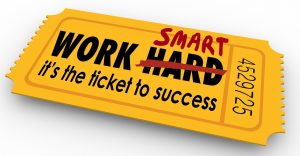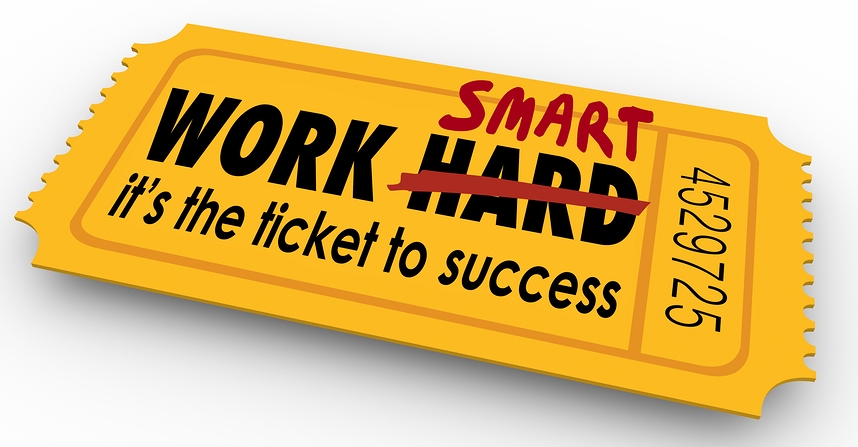We’re human beings, not robots. That’s why it’s not possible for us to do the same things over and over again at the exact same success rate. Why? We like change — we need change.

If you’ve come across the hurdle of lower-than-usual productivity at your company, you’re not alone. In fact, and not surprisingly, only about 25 percent of business leaders have an employee engagement strategy to keep their employees chugging along productively. So, to take some of the weight off your shoulders, we’ve put together three quick steps to help you get your employees engaged and productive.
Step 1: Productivity Through a Vision
Have you ever considered the reason your employees may not be productive is simply because they do not understand the company’s vision? It’s more common than you think. Many employees have a blurry understanding about their company’s goals, strategies, and tactics.
Wondering if your employees know your company’s goals, strategies and the vision? It’s easy to find out. Ask your employees what they think your company’s vision for the future is. If everyone has a different answer, chances are they don’t have a clear understanding. This could be the culprit for low performance.
The solution? Get everyone on the same page — it’s that easy! Hold a meeting where you and your employees go over where your company is headed and show them what each of their roles are in the big picture. Doing this will help your employees understand their individual value and worth in your business.
Step 2: Productivity by Communication
Another big player in productivity at your company is communication. Maybe your employees already understand what the company’s vision is, but does everyone communicate effectively? Here’s a way to find out.
Example: Pull one of your employees into the office. Give them a specific task that they must delegate to another employee. Have the other employee then delegate the same task to another employee. The last employee (third employee if you lost track) must then come back to you and tell you what the task was. It’s a lot like the game of telephone. If the last employee comes back to you with the original task, you know communication is effective. If not, you may have some work to do.
The truth is, communication is hard. Of course, bits and pieces of the task will naturally be lost, but the underlying theme should stay the same if your employees and you communicate effectively. When your employees are communicating to one another effectively, it’s far easier to be productive. Things get done faster and your employees feel accomplished.
Step 3: Productivity Through Creativity
Lastly, it’s time to let your employees’ creativity fly. Why? While not all of your employees are the “creative” type, many of them are. Allow and strongly encourage your employees to be creative — to find solutions to everyday problems in a new way.
How does this boost your employees’ creativity? They’ll feel like they’re part of the solution. It’s much more exciting for an employee to say, “Hey, I came up with this process, cool!” rather than simply following processes without any room for creativity. Make creativity a normal, everyday part of your business.
Conclusion
Keeping in mind that your employees are human beings and not robots, the dream of the perfect employee who works non-stop will slowly fade away. Instead, replace that dream with a happy, creative, and driven employee who is ready for whatever comes their way. Besides, talking to robots (think Siri) never really was too fun.
Zane Benefits is the leader in individual health insurance reimbursement for small businesses. Since 2006, Zane Benefits has been on a mission to bring the benefits of individual health insurance to business owners and their employees.
Zane Benefits’ software helps businesses reimburse employees for individual health insurance plans for annual savings of 20 to 60 percent compared with traditional employer-provided health insurance. Today, over 20,000 customers use Zane Benefits’ software, services, and support to reimburse individual health insurance plans purchased independently of employment. For more information visit ZaneBenefits.com.





 Prolonged wakefulness is reaching epidemic proportion, but I didn’t need to tell you that. You live it each day. In fact, Gallup’s recent study reported that we’re getting an average of 6.8 hours of sleep, slightly below the recommended 7 hours of sleep per night. Between work and parenting, over half of those surveyed under the age of 50 are the most sleep deprived with 46% snagging less than 6 hours of sleep each night.
Prolonged wakefulness is reaching epidemic proportion, but I didn’t need to tell you that. You live it each day. In fact, Gallup’s recent study reported that we’re getting an average of 6.8 hours of sleep, slightly below the recommended 7 hours of sleep per night. Between work and parenting, over half of those surveyed under the age of 50 are the most sleep deprived with 46% snagging less than 6 hours of sleep each night.








